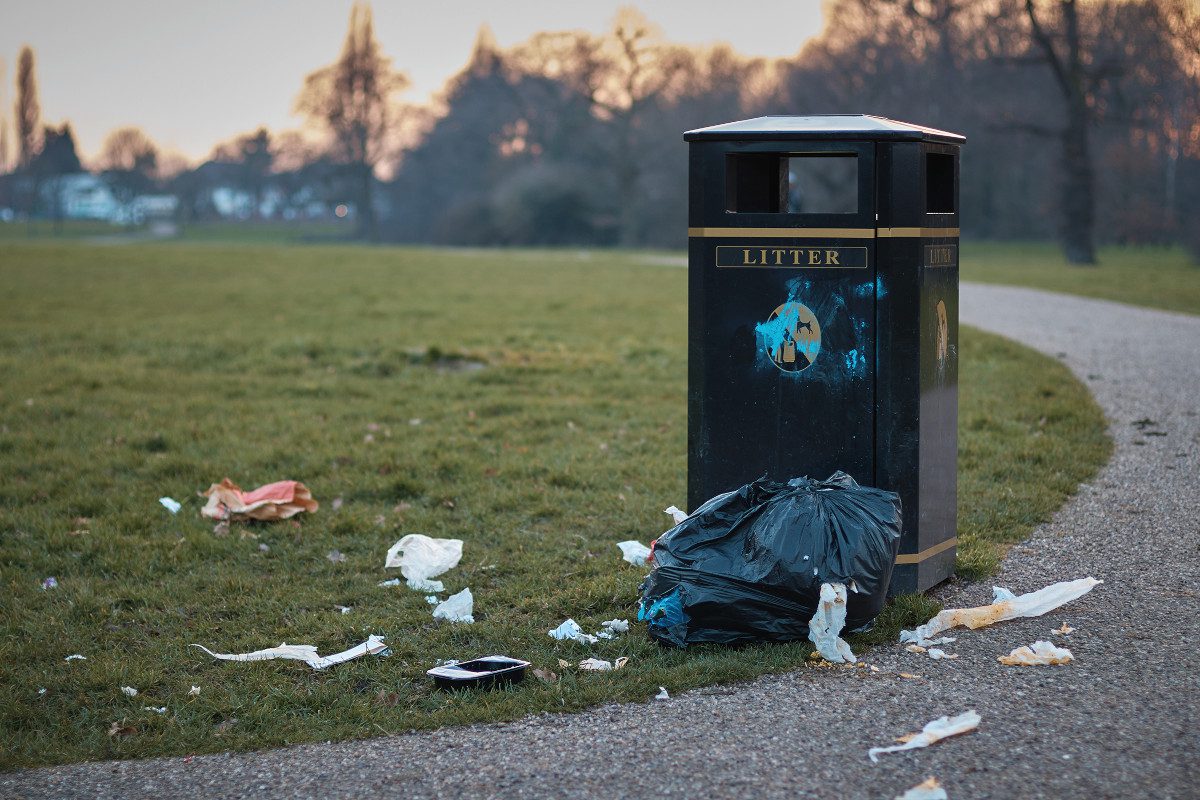
The most recent anti-littering guidance places the blame for littering firmly on high street fast-food restaurants. But, how can councils, enforcement services or take-aways expect to make any significant change without knowledge about the time of day, location or even the specific type of litter that is causing issues? Dyl Kurpil discusses the value of using a littering heat map – it can play a key role in developing a proactive anti-litter strategy, led by data.
Litter is everywhere – and it is a criminal offence
Many governments have tried to combat the litter problem blighting the UK’s motorways, rural lanes and high streets. Littering is a criminal offence, and the UK Government has already bolstered Local Authorities’ enforcement powers by increasing the on-the-spot penalties for littering to £150 in England. Councils can also take offenders to court, where they can potentially be fined up to £2,500 if convicted. However, enforcing littering is not straightforward – as an out of court disposal for a criminal offence, Fixed Penalty Notices (FPNs) have set criteria for when their use is appropriate. For instance, it is arguable that requiring a juvenile to take part in a sponsored litter pick is better than imposing a financial penalty for justice in that kind of situation.
It is not easy to apply enforcement protocols to the Night-time economy though either. For example, while Local Authorities might want to address the issue of drunk people dropping fast food packaging or bottles, officers are not permitted to issue an FPN to anyone who does not have the true capacity to understand. Nobody wants to risk escalating incidents either into situations where physical harm is potentially an outcome. Therefore, this makes it is a tough judgement call for enforcement officers to make when facing a group of individuals, who have had a night in the pub after a few drinks. So, late-night littering is normally treated with discretion, instead of issuing a fine.
The latest guidance
The blame for litter appears to lay firmly with fast food restaurants, according to the latest guidance from the government. The focus is on clarifying the powers councils in England have to set stricter litter rules for new hot food takeaways when considering planning applications; including ensuring that more bins are installed to reduce rubbish in the surrounding area.
While figures show that fast food items are the fourth most common type of litter found on UK high streets; take-aways, by their very nature, are often not eaten on site. So, will more bins make a difference? People consume on their way home or to work. Roadside litter, however, is often the result of packaging being thrown out of the car window. Although fast food businesses have an array of bins, including wide mouth bins that can be accessed from the car while exiting a drive-through location, those bins are useless if the customer is miles down the road when the food has been eaten.
Litter Heat Map
An accurate understanding of time, place and contributors relating to litter haven’t been considered in previous litter prevention strategies either. From late night littering, to children coming out of schools to pick up snacks, the reality is that most councils have no true idea who/what the biggest contributors of are. They may know that fast food outlets contribute heavily to the litter tally – but which are the worst offenders? How far away from the retailer is that litter found? What times of day are the worst littering events? Is litter coming from tourists/day trippers, or are the locals primarily to blame? This is the data that councils need to inform anti-littering strategies.
Enforcement Services already record information about where anti-social behaviour, including littering and dog fouling, occurs. Information, including litter type, location and time of day, can be used to create a Heat Map of littering activity. This can highlight if children are the biggest contributors to litter, for instance, and the time of day when littering is at its highest. Insight like this can help the council can embark on an education campaign, and encourage schools to get involved in litter picks. Understanding the time that litter offences take place is helpful, particularly as it can enable enforcement officers to concentrate on when they carry out certain duties too.

Thinking ahead
This insight can also help councils optimise bin location and emptying patterns. For example, adding a bin collection service could significantly reduce litter build up that occurs when bins are full. This can also assist councils with determining the full effect of take-aways on the overall littering issue in their area – and offer useful information that can be shared share with the appropriate food retailer.
No well-known, or growing, fast-food business wants its rubbish to be thrown out of car windows and left on the roadside – that kind of advertising does not benefit their brand. However, it is difficult for these companies to develop their own anti-litter strategies too, if they do not know when and where their packaging is being left either.
A deposit return scheme for drinks containers, extended producer responsibility for packaging and consistent recycling collections are all part of larger ambitious plans. In addition to this, companies can create their own anti-littering strategies too, by developing insights about the timing and location of litter. Continuously updating a littering Heat Map will generate vital data that supports and informs decision making here – this can assist councils, fast food companies and enforcement officers by enabling them to respond to litter issues with an intelligence driven and targeted strategy.






